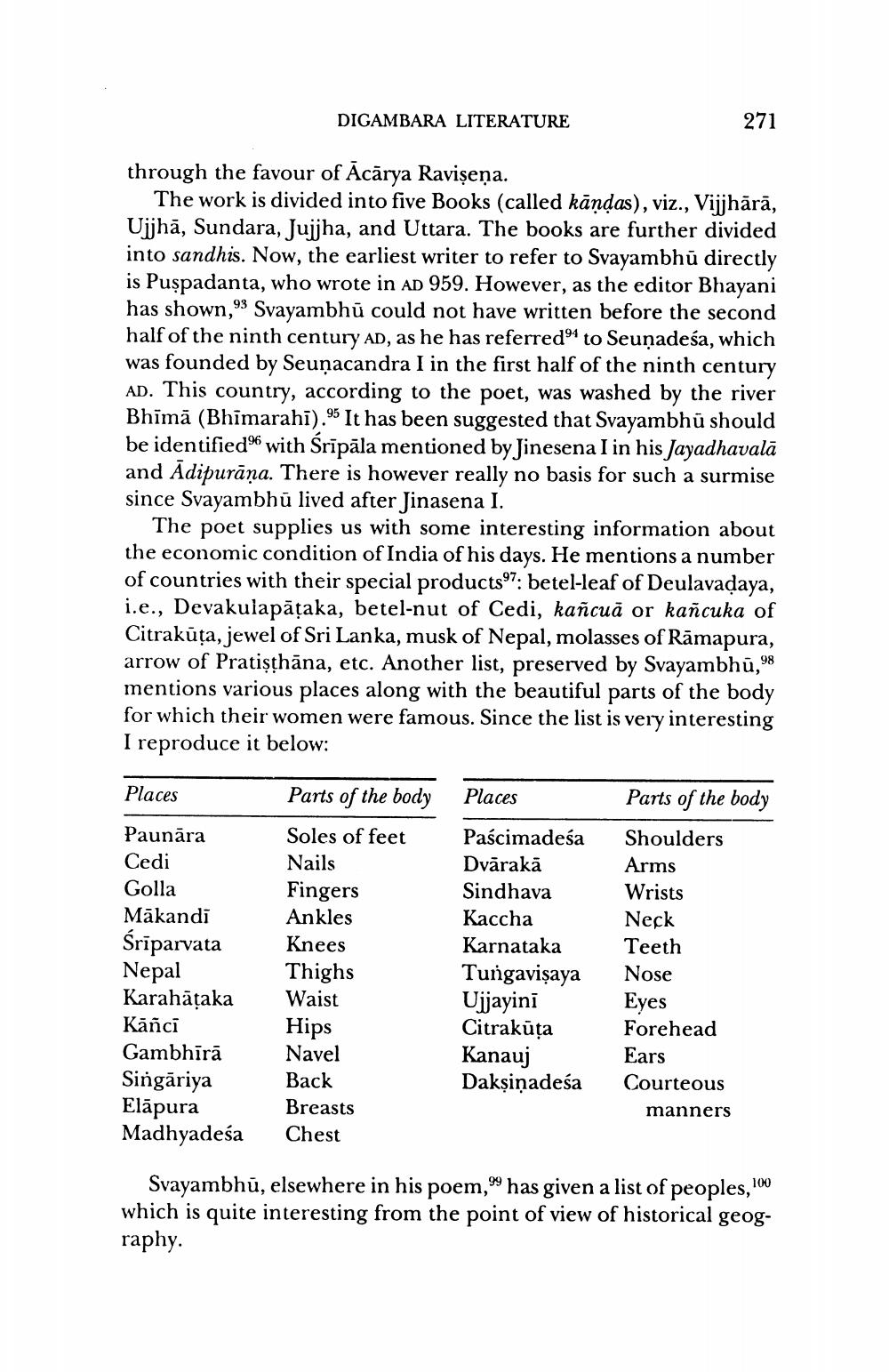________________
DIGAMBARA LITERATURE
271
through the favour of Ācārya Ravişeņa.
The work is divided into five Books (called kāņdas), viz., Vijjhārā, Ujjhā, Sundara, Jujjha, and Uttara. The books are further divided into sandhis. Now, the earliest writer to refer to Svayambhū directly is Puspadanta, who wrote in AD 959. However, as the editor Bhayani has shown,93 Svayambhū could not have written before the second half of the ninth century AD, as he has referred to Seunadeśa, which was founded by Seuņacandra I in the first half of the ninth century AD. This country, according to the poet, was washed by the river Bhimā (Bhimarahī).95 It has been suggested that Svayambhū should be identified with Srīpāla mentioned by Jinesena I in his Jayadhavala and Ādipurāņa. There is however really no basis for such a surmise since Svayambhú lived after Jinasena I.
The poet supplies us with some interesting information about the economic condition of India of his days. He mentions a number of countries with their special products97: betel-leaf of Deulavadaya, i.e., Devakulapāțaka, betel-nut of Cedi, kañcuă or kañcuka of Citrakūta, jewel of Sri Lanka, musk of Nepal, molasses of Rāmapura arrow of Pratisthāna, etc. Another list, preserved by Svayambhū,98 mentions various places along with the beautiful parts of the body for which their women were famous. Since the list is very interesting I reproduce it below:
Places
Parts of the body
Places
Parts of the body
Soles of feet Nails Fingers Ankles Knees Thighs Waist
Shoulders Arms Wrists Neck Teeth
Paunāra Cedi Golla Mākandi Śrīparvata Nepal Karahātaka Kāñci Gambhīrā Singāriya Elāpura Madhyadeśa
Pascimadesa Dvāraka Sindhava Kaccha Karnataka Tungavişaya Ujjayini Citrakūta Kanauj Daksinadesa
Nose
Hips
Navel Back Breasts Chest
Eyes Forehead Ears Courteous
manners
Svayambhū, elsewhere in his poem,99 has given a list of peoples,100 which is quite interesting from the point of view of historical geography.




